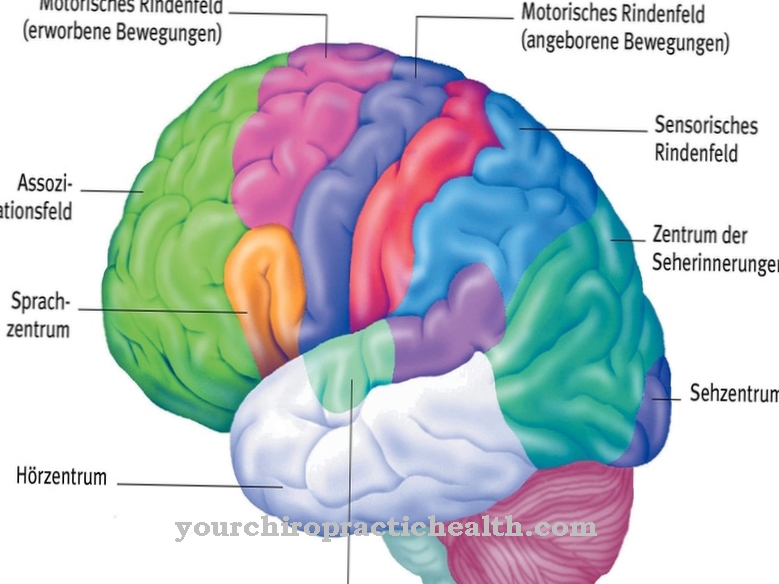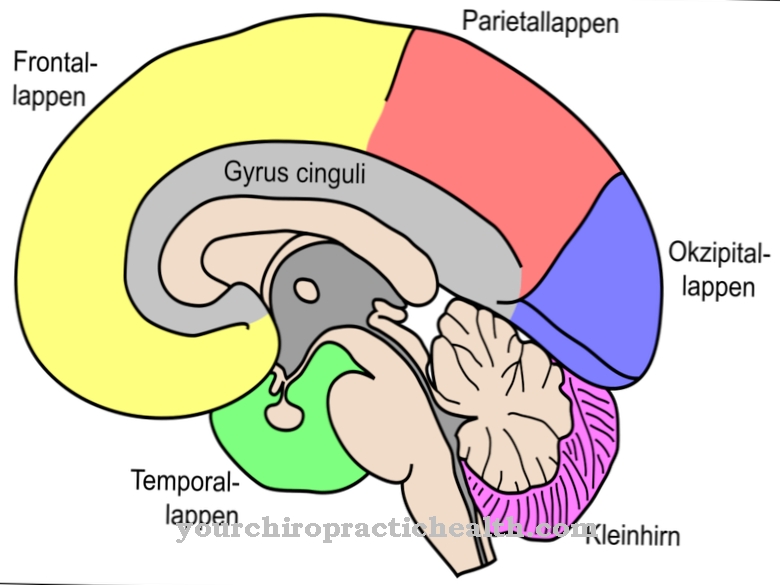The Cytoplasm fills the inside of a human cell. It consists of the cytosol, a liquid or gel-like substance, the organelles (mitochondria, Golgi apparatus, etc.) and the cell skeleton. Overall, the cytoplasm is used for enzymatic biosynthesis and catalysis, as well as for material storage and intracellular material transport.
What is cytoplasm?
The definition of the term cytoplasm is not uniform in the literature. Some authors consider the entire bioactive content of the human cell, including the nucleus in its entirety, to be the cytoplasm. Other authors do not count the organelles contained in the cell such as mitochondria and the endoplasmic reticulum and the cell nucleus as cytoplasm, but use the term protoplasm, under which they subsume the entire content of the living human cell.
The cytoplasm contains the nucleus and numerous organelles (up to many thousands), and it is traversed by microfilaments, intermediate filaments and microtubules. These are the cytoskeleton, proteins that give the cell strength and structure and enable the intracellular transport of substances - including transport through biomembranes. The liquid or gel-like part of the cytoplasm is called the cytosol. Changes in the consistency within certain areas of the cytosol also move organelles within the cell.
In order to enable many parallel biochemical reactions within the cell, spaces, so-called compartments, can be formed within the cytoplasm by biomembranes. They enable the different environmental conditions required in each case.
Anatomy & structure
The cytoplasm contains about 80.5 to 85% water, 10 to 15% proteins, 2 to 4% lipids, and the rest is made up of polysaccharides, DNA, RNA and organic and inorganic molecules and ions. The pH value of the cytoplasm is almost neutral at 7.0 and is kept as stable as possible by buffering. The pH value can also be stabilized or slightly changed using ion pumps.
The cytoskeleton, which gives the cell its strength and shape and ensures the intracellular transport of substances, consists of actin filaments (microfilaments), intermediate filaments and microtubules. The cytoskeleton is subject to a dynamic construction and remodeling process that allows structural adaptations. Actin filaments are made up of long-chain protein polymers with an extremely thin diameter of around 6 to 9 nanometers. Intermediate filaments are made up of different structural proteins (keratins) in a much more complex manner, and there are 5 different types.
The tubular microtubules with a diameter of around 24 nanometers are made up of tiny globular units of tubulin. Microtubules can range in length from fractions of a micrometer to several hundred micrometers. Depending on the task, microtubules can be very short-lived to stable long-lived.
Function & tasks
The individual components of the complex cytoplasm have a wide variety of functions and tasks. The overriding tasks are the storage of certain substances and the enzymatic-catalytic bioactivity, i.e. the building up and breaking down of substances that are required or no longer required. A number of tools are available to the cytoplasm or cell to perform these overarching tasks.
Since many conversion processes take place within certain organelles, the cytoplasm can ensure intracellular transport of the organelles to the optimal “location” within the cell by changing the consistency from gel-like to watery and vice versa. The microtubules, which enable vesicle transport through membranes, take on special functions. Substances to which the membranes are not permeable are enclosed in vesicles (protuberances of the membrane) and guided through the membranes with the help of the microtubules. Microtubules also play a special role in movements within a cell and in the self-movements of certain cell types that move by means of whiplash (e.g. sperm).
Microtubules take on another special function in the chromosome arrangement during mitosis (normal cell division) after DNA replication. Microtubules also play an important role in the stabilization of axons (also simply referred to as nerves), the nerve processes that transmit nerve impulses from the nerve cell to the target tissue (efferent) or from the sensor to the nerve cell (afferent). The ability of the cytoplasm to form closed reaction spaces within the cell through the formation of membranes enables the cell to run many biochemical processes simultaneously, which are controlled enzymatically and catalytically and each require its own reaction environment.
You can find your medication here
➔ Medicines against memory disorders and forgetfulnessDiseases
The almost unmanageable abundance of functions that the cytoplasm or certain individual components of the cytoplasm have, suggests that there can be complex and differentiated functional disorders and complaints in connection with the cytoplasm. Colchicine, also known as spindle poison, serves as an example of a specific dysfunction.
It is an alkaloid of the autumn crocus that binds to monomeric tubulin, inactivates it and prevents the formation of the spindles for cell division (mitosis). This prevents normal cell division. Vinblastine, a chemotherapeutic agent based on a similar spectrum of activity, is used specifically in the presence of certain types of cancer in order to deprive the tumor of its growth base. Likewise, poisons that hinder the cytoplasm's ability to take ATP from the mitochondria and deliver ADP there can quickly become life-threatening.
So-called tauopathies are based on gene mutations that lead to structural changes in the tau protein. The tau protein is indispensable for the structure of the microtubules, so that problems arise especially in the area of the central nervous system (CNS). Diseases such as Pick's disease, HDDD dementia and a few others can be traced back to a gene mutation that leads to deposits of tau protein. The best known tauopathy is Alzheimer's disease.
























.jpg)



